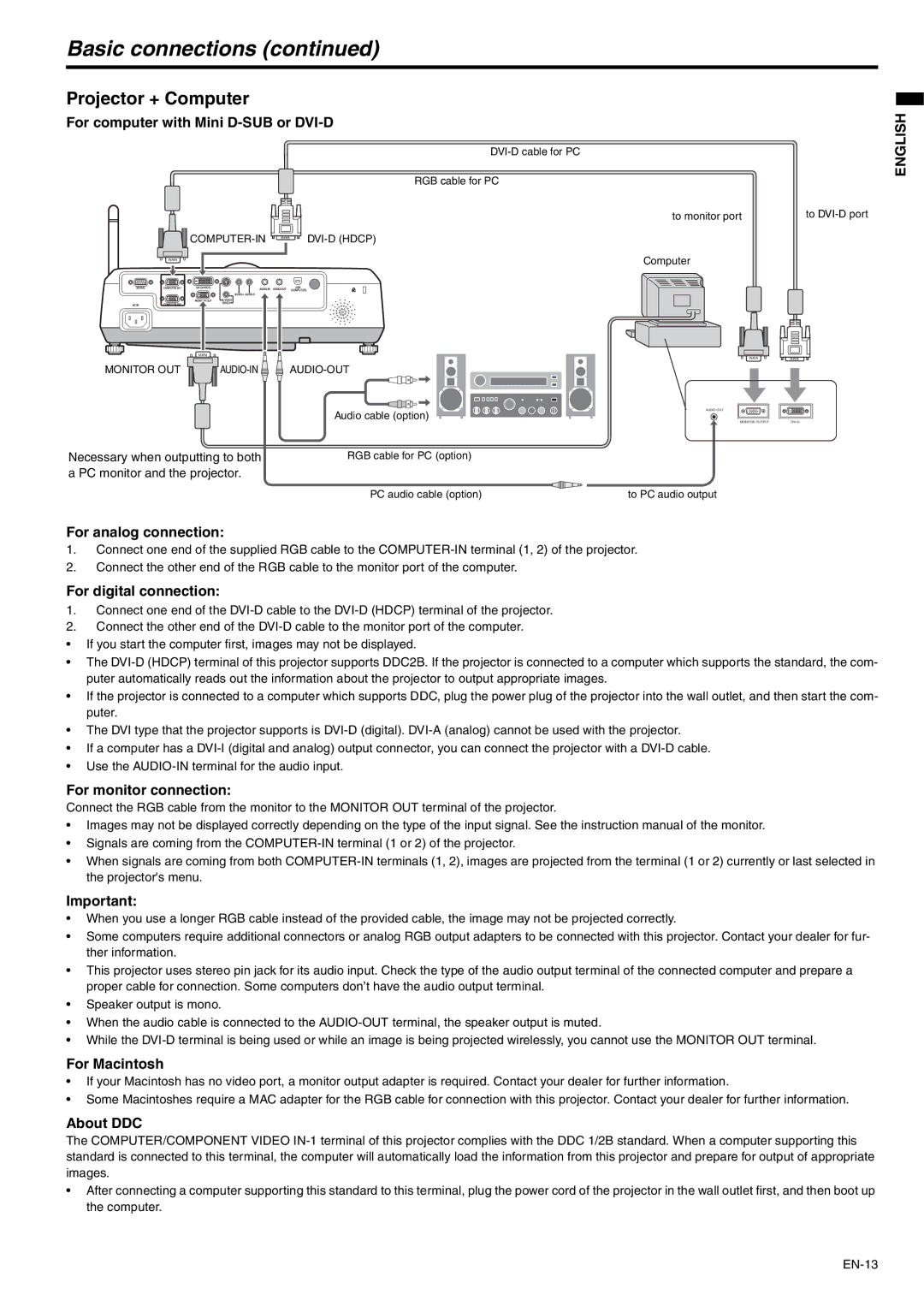
Basic connections (continued)
Projector + Computer
For computer with Mini D-SUB or DVI-D
|
RGB cable for PC
to monitor port | to |
Computer
ENGLISH
MONITOR OUT |
| |
|
| Audio cable (option) |
Necessary when outputting to both | RGB cable for PC (option) | |
a PC monitor and the projector. |
| |
PC audio cable (option)
AUDIO OUT
MONITOR OUTPUT |
to PC audio output
For analog connection:
1.Connect one end of the supplied RGB cable to the
2.Connect the other end of the RGB cable to the monitor port of the computer.
For digital connection:
1.Connect one end of the
2.Connect the other end of the
•If you start the computer first, images may not be displayed.
•The
•If the projector is connected to a computer which supports DDC, plug the power plug of the projector into the wall outlet, and then start the com- puter.
•The DVI type that the projector supports is
•If a computer has a
•Use the
For monitor connection:
Connect the RGB cable from the monitor to the MONITOR OUT terminal of the projector.
•Images may not be displayed correctly depending on the type of the input signal. See the instruction manual of the monitor.
•Signals are coming from the
•When signals are coming from both
Important:
•When you use a longer RGB cable instead of the provided cable, the image may not be projected correctly.
•Some computers require additional connectors or analog RGB output adapters to be connected with this projector. Contact your dealer for fur- ther information.
•This projector uses stereo pin jack for its audio input. Check the type of the audio output terminal of the connected computer and prepare a proper cable for connection. Some computers don’t have the audio output terminal.
•Speaker output is mono.
•When the audio cable is connected to the
•While the
For Macintosh
•If your Macintosh has no video port, a monitor output adapter is required. Contact your dealer for further information.
•Some Macintoshes require a MAC adapter for the RGB cable for connection with this projector. Contact your dealer for further information.
About DDC
The COMPUTER/COMPONENT VIDEO
•After connecting a computer supporting this standard to this terminal, plug the power cord of the projector in the wall outlet first, and then boot up the computer.
